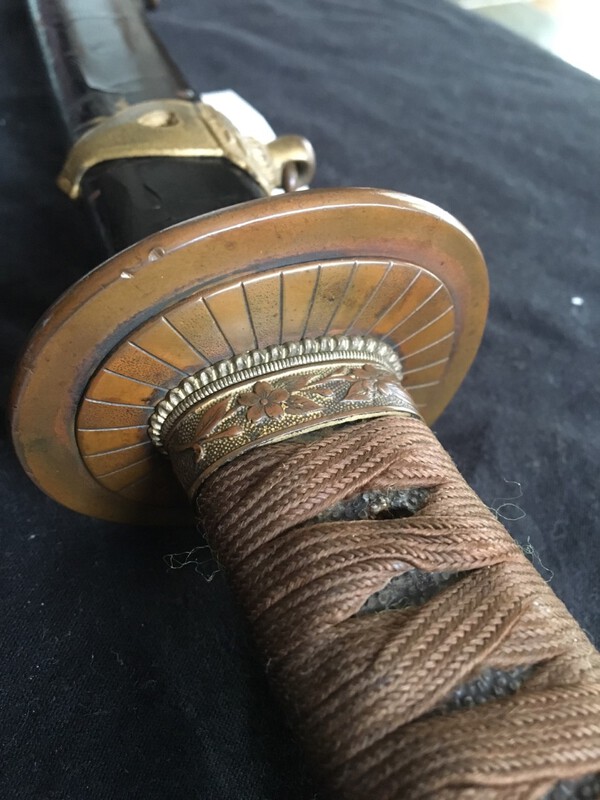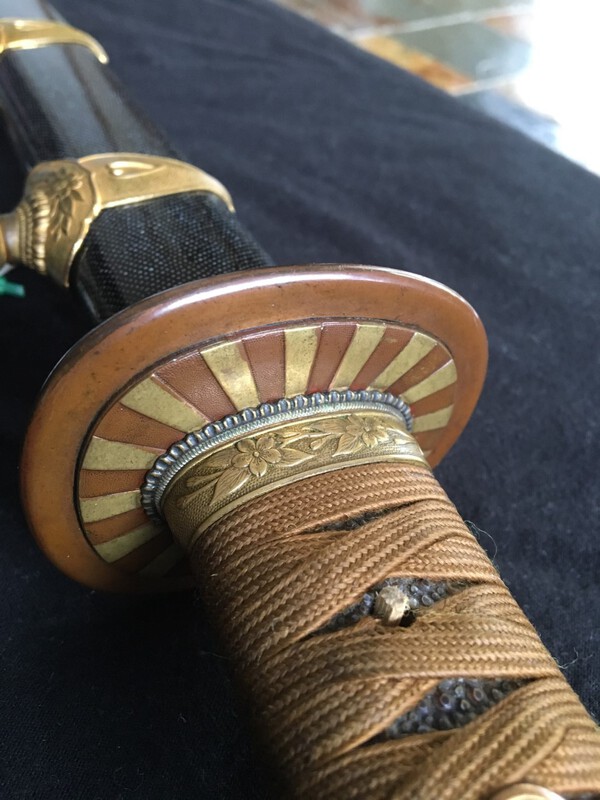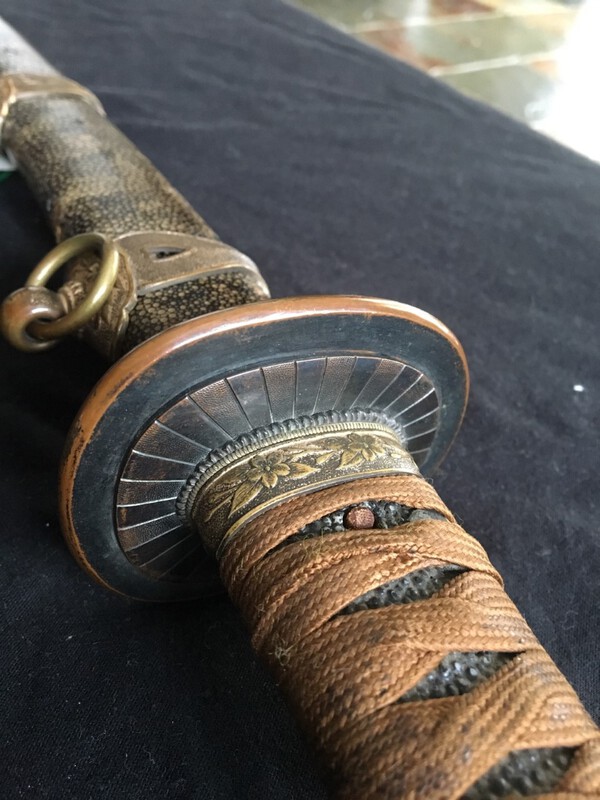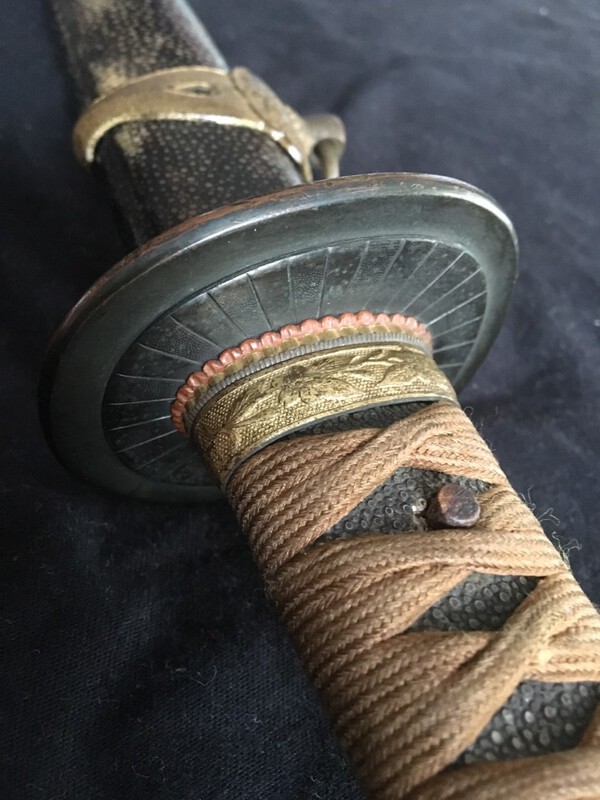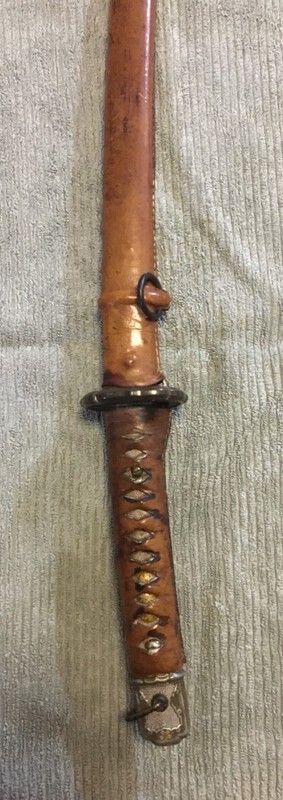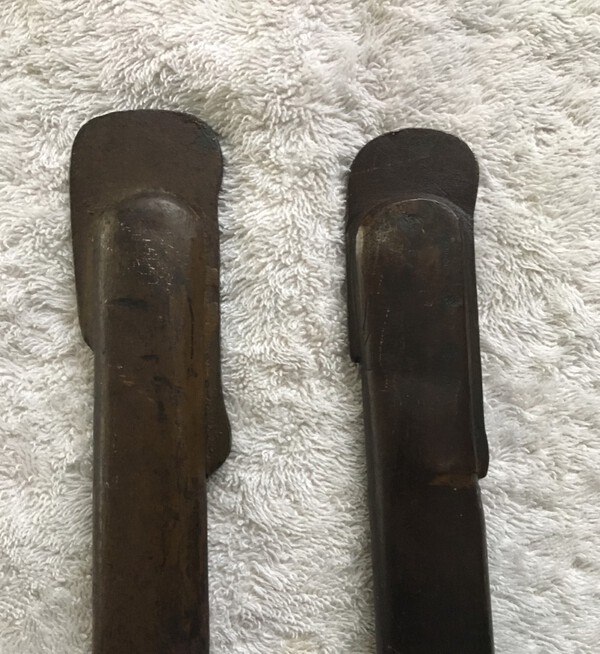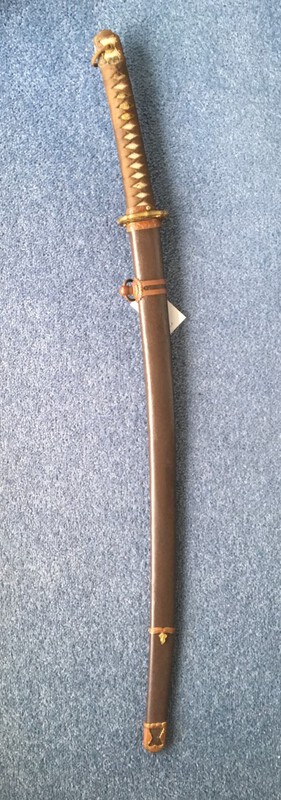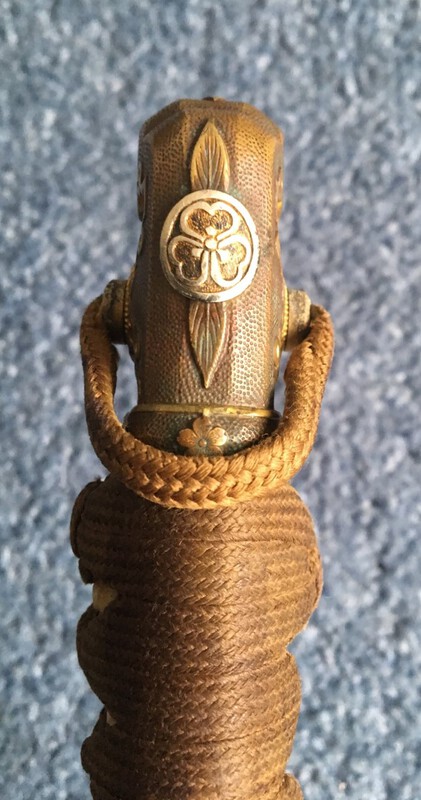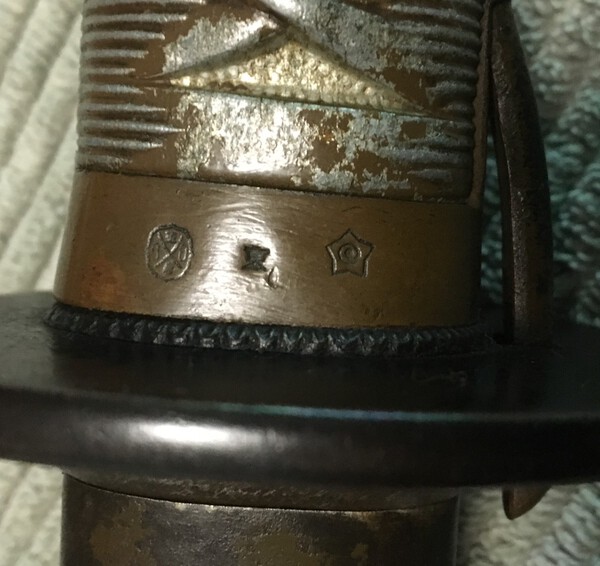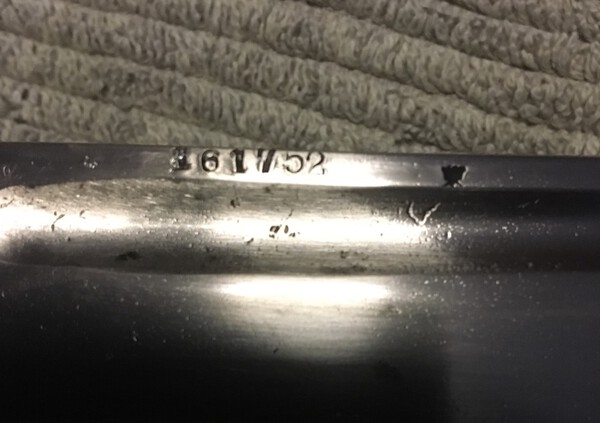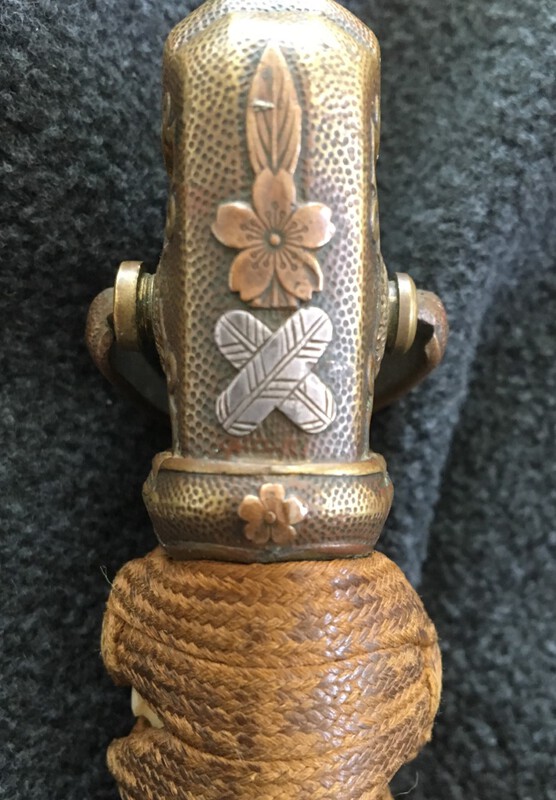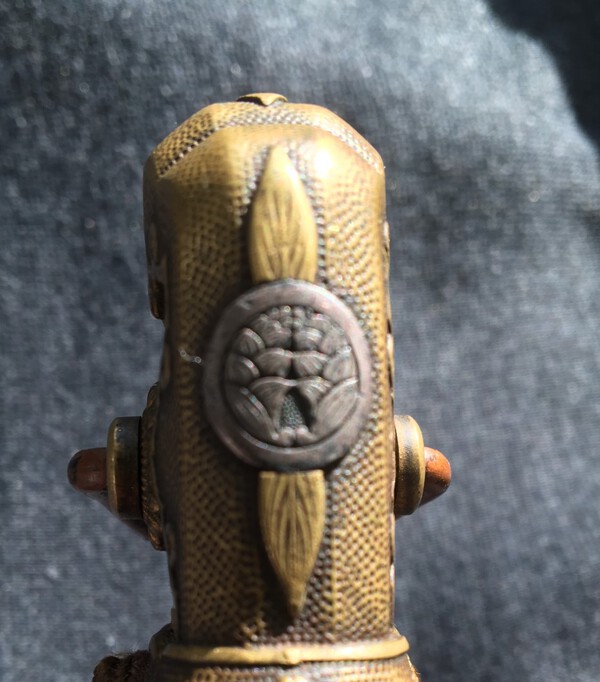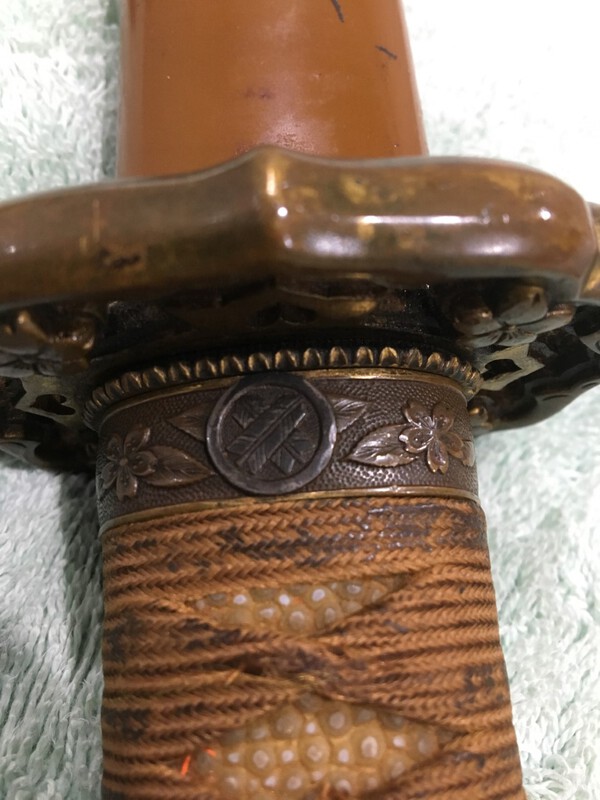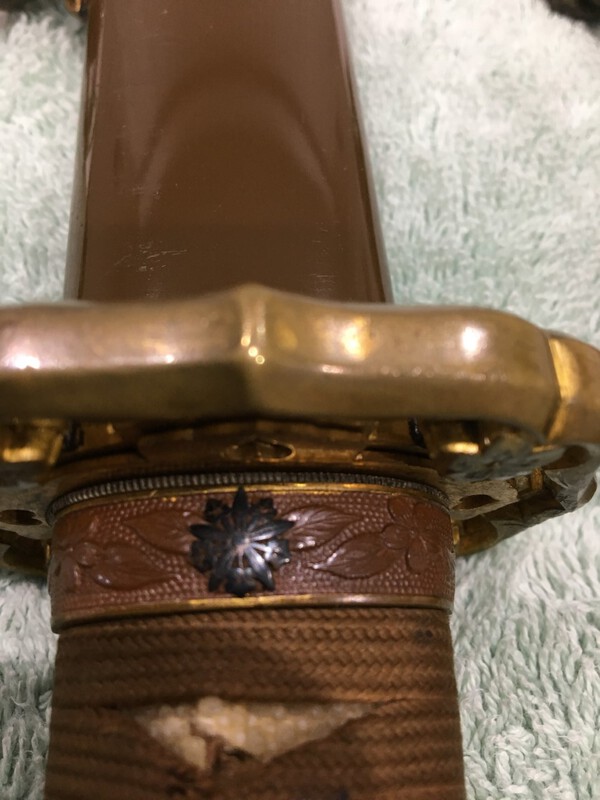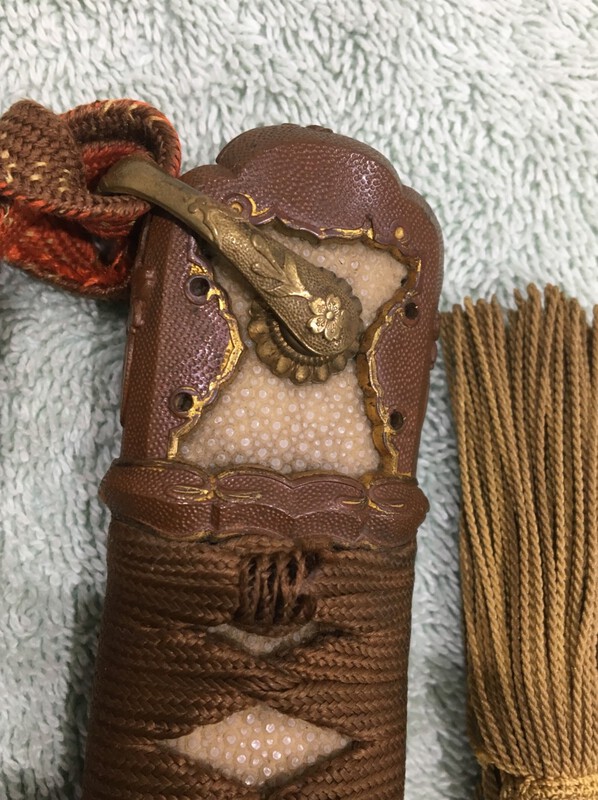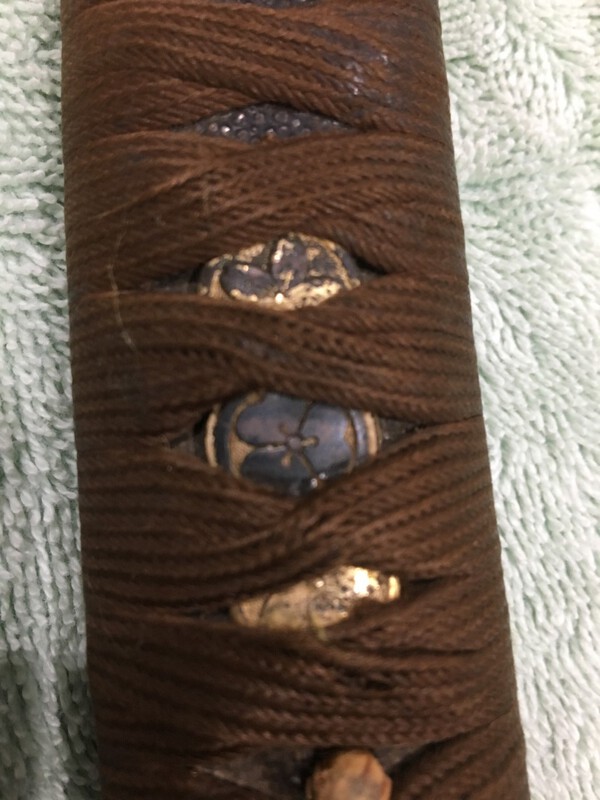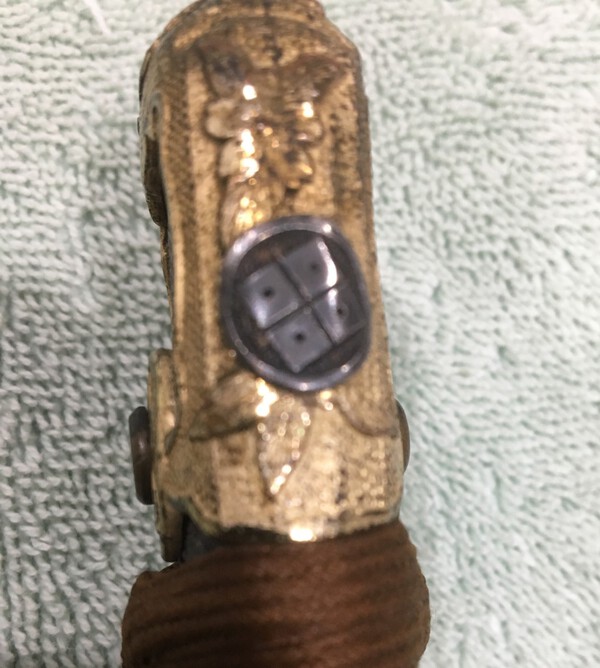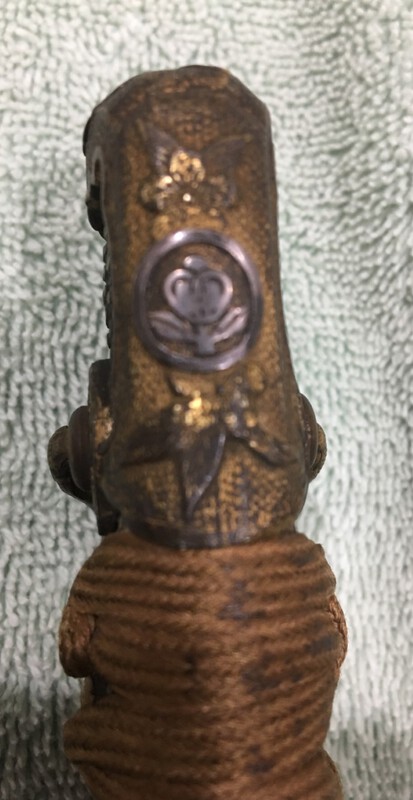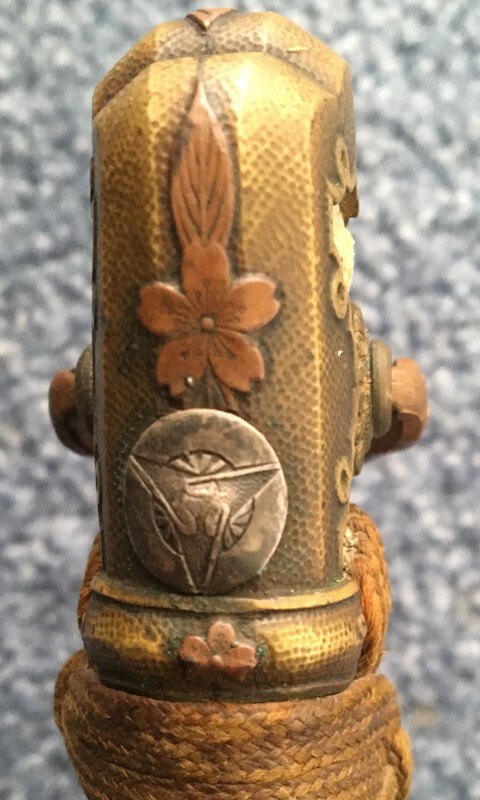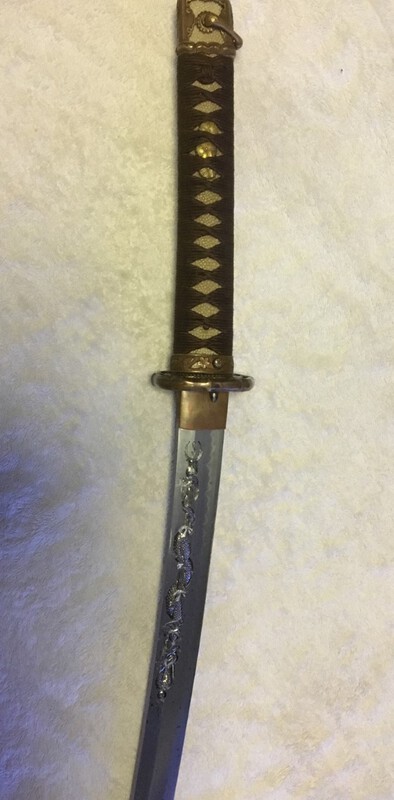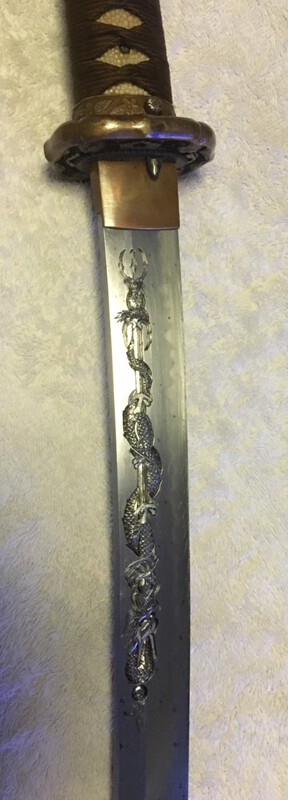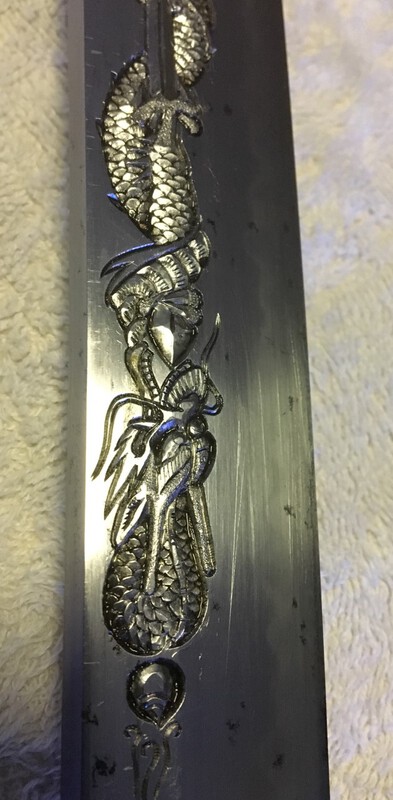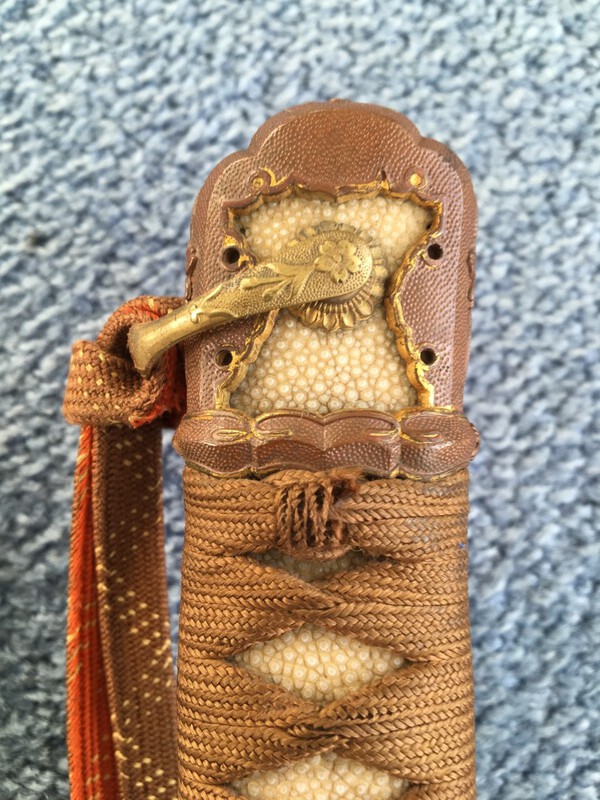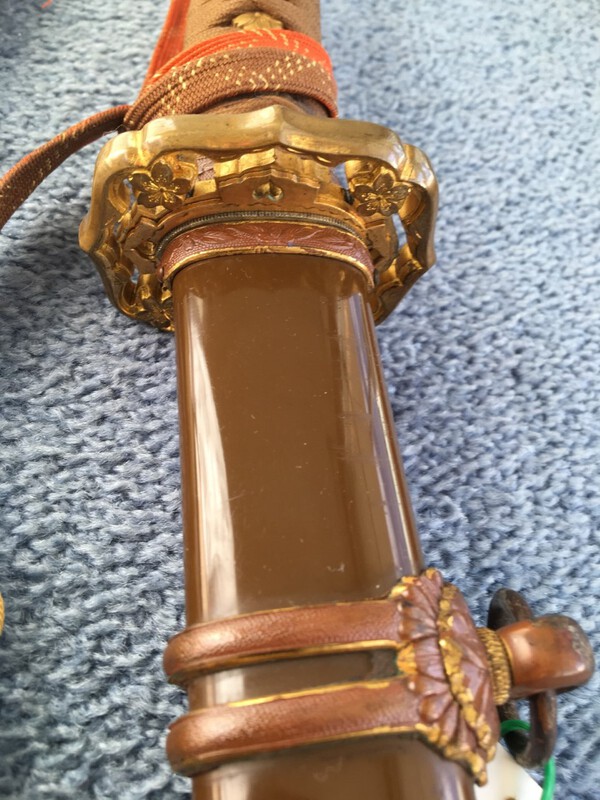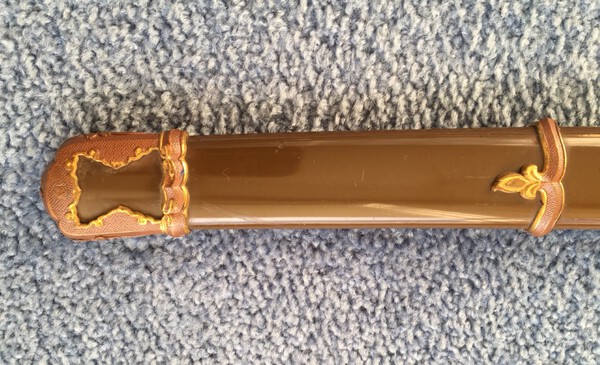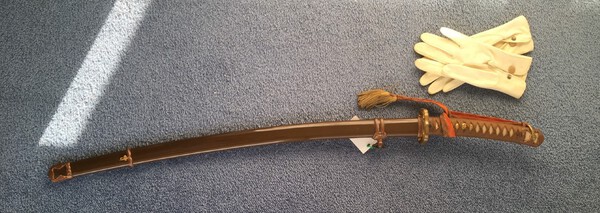-
Posts
1,902 -
Joined
-
Last visited
-
Days Won
85
Content Type
Profiles
Forums
Events
Store
Downloads
Gallery
Everything posted by IJASWORDS
-
Austus, all my Kais have copper and brass fittings. Remember that they were made for the Navy, and iron or steel fittings would rust, even if plated, in salt water environment. They actually made many some Kais with rust proof (stainless steel ) blades for this reason .
-
-
-
I have noticed that there is variations of the drag on the wood handle pattern 5 NCO sword. Why is this? Were they made in different factories ?
-
Thank you Guido and Koichi.
-
-
Thank you Moriyama Koichi, what is the meaning of Kangi in the mei? I was not expecting this word in the translation .
-
-
-
Hey Bruce , I pulled apart a 1938 '98, and found a stamp on the pierced tsuba. It is the Suya "harp" stamp. I guess this koshirae/sword came from the Suya Sword Shop? I have never seen that before . It is a Yasukuni Shtine blade, so maybe you may know if this shop fitted out Yasukuni swords?
-
-
This I have been told is more a good luck charm rather than a family mon. It looks like a ginger plant. Help would be appreciated .
-
Dave , are you saying that during war time civilians were buying new swords for personal non-military use? I have a showa-to in civilian mounts of the period WITH a leather saya "combat" cover, I always thought that they were an an option for officers. I am not questioning your hypothesis , but have not heard it before .
-
These are the two swords I put up on the "Pinned Kabutogane" thread . These are early '94's with lovely thick tsubas. The interesting feature is the Mon located on the fuchi.
-

Are Contengency Gunto (Type 3) Underpriced?
IJASWORDS replied to Bruce Pennington's topic in Military Swords of Japan
Bruce , answering your question from an anecdotal personal view point only, I have basically collected nearly every gunto that comes my way . And my collection contains 15% Contingency gunto. Not a scientific guide I know , but this is about what I see in the market . From another angle , I think ALL gunto are under valued . -
John , interesting topic. These swords have a number of things in common . 1. High status 94 pattern koshirae for usually high ranking officers . 2. Usually house an old blade (making manufacturing date impossible ). 3. The sword with the general tassel has a drilled kabutogane, where the other is drilled and has pins inserted . 4. The ferrule for the sarute barrel if floating and not cast in the kabutogane like later 98 pattern . 5. I have a couple of bona fide 94's that are not drilled, pinned, or don't have floating sartute ferrules. (later production ?). 6. I think they are early 94's as the koshirae required a lot more fiddley pieces and workmanship , probably pre-Pacific war time . Interestingly, both the swords pictured have the family mon on the fuchi NOT on the kabutogane.
-
David , I agree , my post was a tongue in cheek comment . My purpose of this thread was to identify the mons, as Malcolm has done admirably .
-
John just noticed that my Kai has the same mon as your Shin Gunto. One brother in the army an another the Navy ?
-
Malcolm , I can see that you will be an invaluable resource . So far only Shin Gunto examples posted . I will throw in some Kai Gunto examples , one of which is on the menuki.
-
Thanks Steve and George , I will add the information to sword details . And gives me a great lead into more research .
-
As owners of military swords, many of us have swords with a family or clan mon. From time to time they are posted in different threads for identification. I would love to see a dedicated thread on the photographic recording of them and contributions from members who can identity the Mon. I have attached one such mon , which looks like three open fans that I would like identified . Hopefully it will encourage those knowledgeable on the subject to help us out . I tag and catalogue my swords with all the information I can find , including the mon. If this thread is flagging , I will keep putting more up .
-
-
-

Could this be Prince Takeda's sword?
IJASWORDS replied to Austus's topic in Military Swords of Japan
In no way am I arguing with so called traditionalists, I hope we are all seekers of truth and facts. I am basing my statement on historical fact that Yasuki tatara operating in 1933 using iron sand as s feed maternal produced about 50 tons of tamahagane. Secondly gunto means army sword. I have many with old traditional blades in gunto mounts. Many papered. So the gunto that traditionalists look down on refer to machine made blades only not gunto per se. -

Could this be Prince Takeda's sword?
IJASWORDS replied to Austus's topic in Military Swords of Japan
Austus, your reference to Yasuki Steel is significant . The Yasuki Steel Production Company actually built and operated a Tatara producing tamahagane. This is the precursor of traditionally made swords. This could mean that Kanesane made this blade traditionally .



